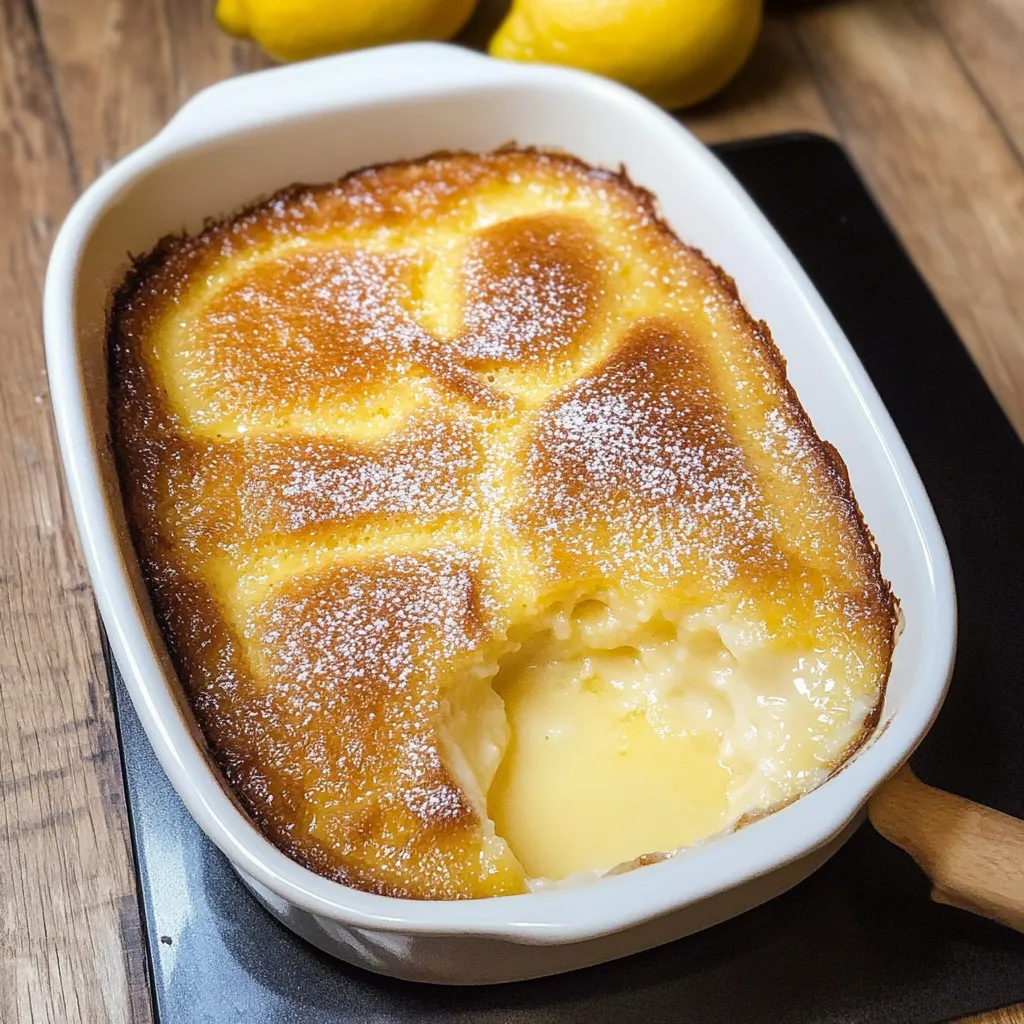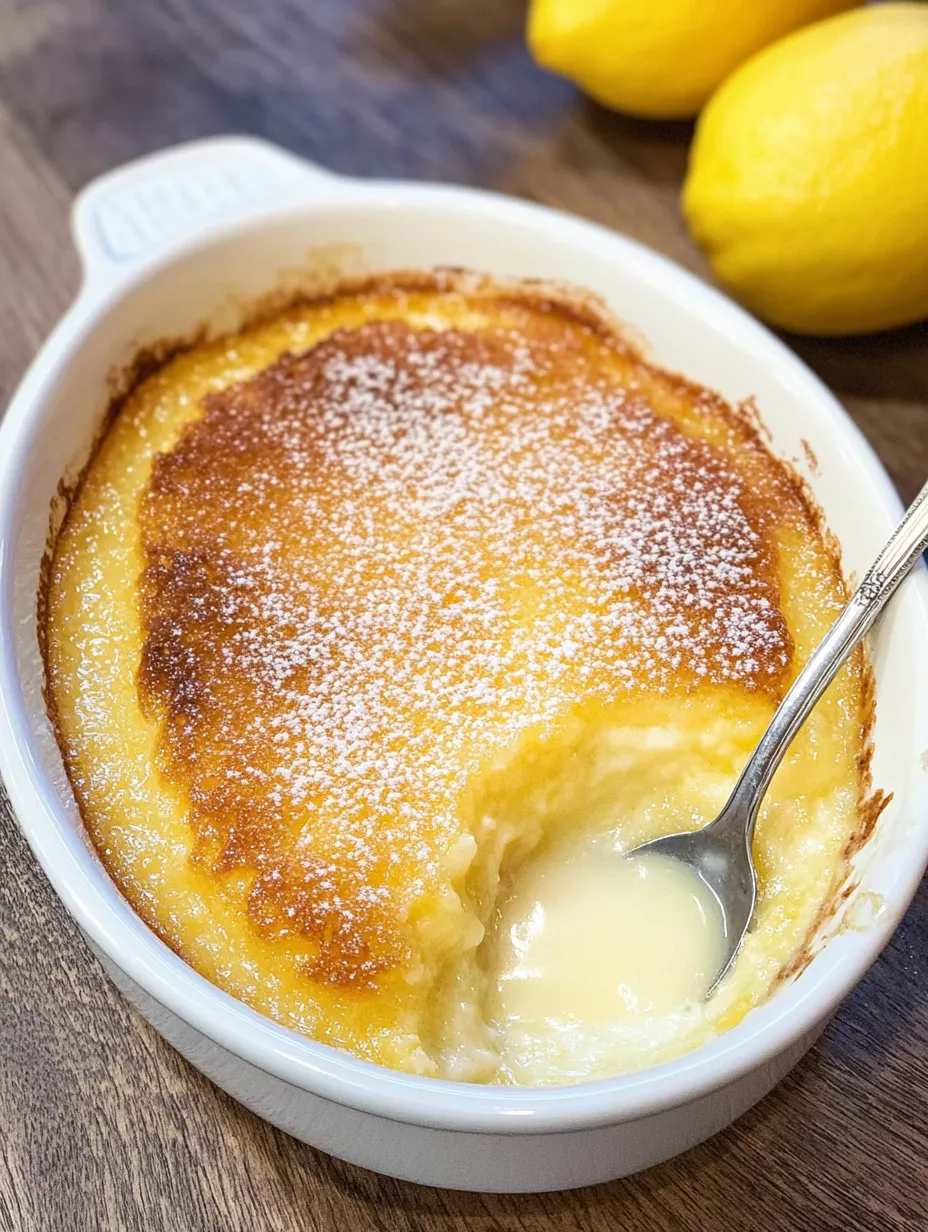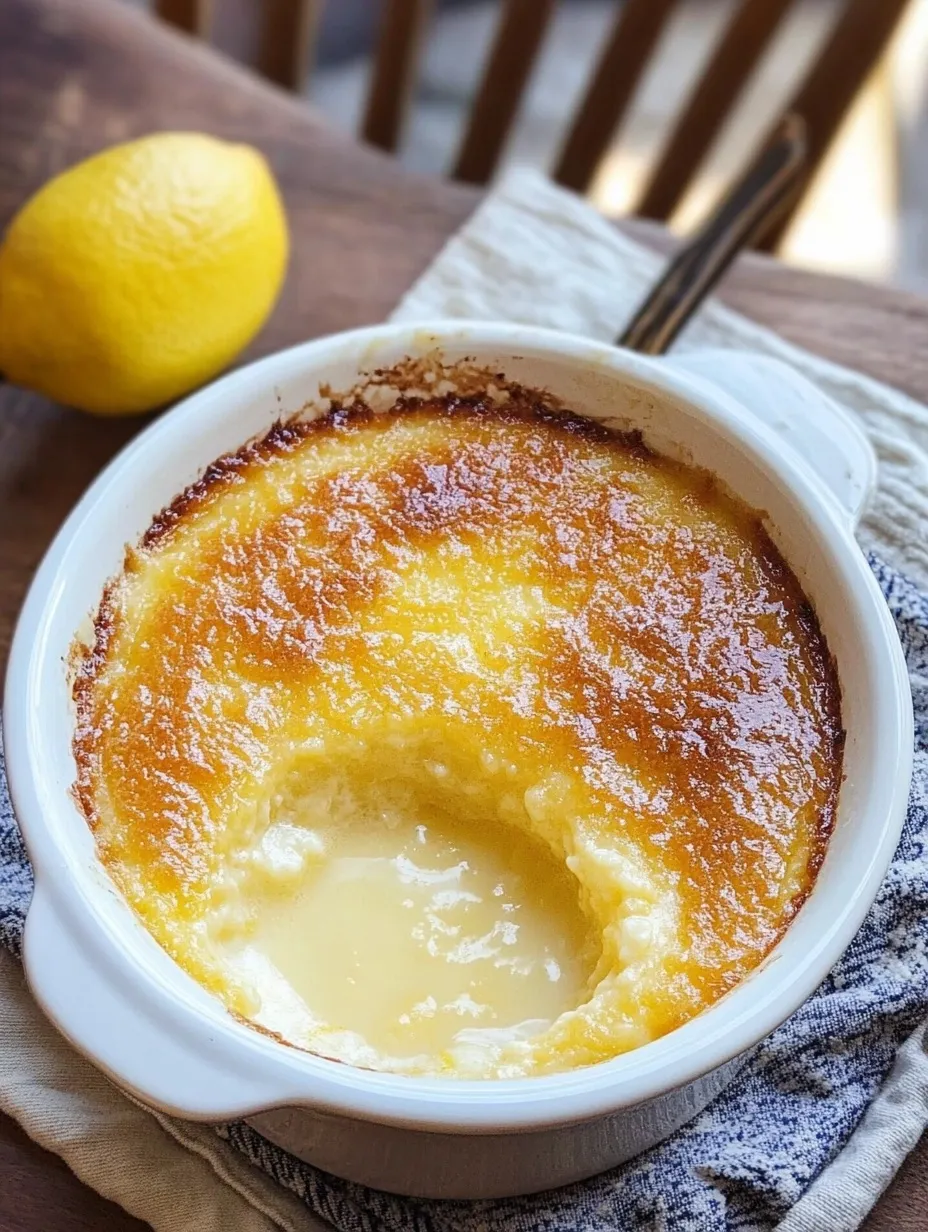 Pin it
Pin it
I stumbled across this Jamie Oliver lemon pudding recipe a few years back when I was looking for something to make with the lemons from my neighbor's tree. It's become my go-to dessert for Sunday family dinners because it seems fancy but is actually ridiculously simple. The magic happens in the oven - the batter separates into a fluffy cake layer on top and a warm, gooey lemon sauce underneath. Every time I make it, people think I've done something complicated, but it's basically just throwing ingredients together and letting the oven do the work.
Last month, my mother-in-law (who's notoriously picky about desserts) asked for the recipe after her first bite. She couldn't believe something this good only needed a handful of ingredients. That's when I knew this recipe was a certified keeper.
Simple Ingredients
- Butter: creates that rich, tender cake layer - make sure it's at room temperature for proper creaming
- Fresh lemon zest: contains all those essential oils that give incredible flavor
- Separated eggs: are the secret to the pudding's magic self-saucing effect
- Self-raising flour: keeps things light and fluffy without extra steps
- Whole milk: adds richness to the sauce layer - I've tried with low-fat and it wasn't the same
I've made this countless times now, and I've learned that using a real lemon rather than bottled juice makes a world of difference in the flavor. The first time I tried this, I didn't have self-raising flour, so I used regular flour with a bit of baking powder (about 1 teaspoon), and it worked fine in a pinch.
 Pin it
Pin it
Baking Steps
- Oven prep:
- Crank your oven up to 400°F (200°C). While it's heating, butter your baking dish - I use a deep ceramic one that's about 1.5 quarts. The first time I made this, I used a shallow dish and had sauce overflow everywhere, so depth matters! Make sure your roasting tin is large enough to hold your pudding dish with room for water around it.
- Butter magic:
- In a mixing bowl, drop in your room temperature butter and sugar. Grab your lemon and grate the zest directly into the bowl (trying not to get any of the bitter white pith). Now beat everything together until it's pale and fluffy - this usually takes me about 3 minutes with an electric mixer. Don't rush this step - proper creaming creates air pockets that help the pudding rise.
- Building the base:
- Crack your eggs and separate the whites from the yolks (I usually do this by passing the yolk back and forth between the shell halves over a separate bowl). Add the yolks to your butter mixture one at a time, beating well after each. Then gradually add the flour, continuing to beat until everything is smooth. The first time I did this, I dumped all the flour in at once and spent ages trying to beat out the lumps, so I've learned my lesson!
- Liquid addition:
- Cut your lemon in half and squeeze out about 3 tablespoons of juice. I just eyeball it - a medium lemon usually gives about the right amount. Pour this into your mixture along with the milk, and stir until everything is well combined. The mixture will look quite liquid at this point, which is totally normal - don't panic like I did the first time!
- Egg white wizardry:
- In a clean, dry bowl (any trace of grease will prevent them from whipping properly), beat your egg whites until they form stiff peaks. You should be able to turn the bowl upside down without them falling out. Using a metal spoon or rubber spatula, gently fold the whites into your lemon mixture. I go around the outside of the bowl and then cut through the middle, turning the bowl as I go. The key is to be gentle so you don't knock all the air out - my first attempt looked like lemon soup because I stirred too vigorously.
- Water bath setup:
- Pour your mixture into the buttered baking dish. Place this dish inside your roasting tin, then carefully pour warm water into the tin until it comes about a third of the way up the sides of your pudding dish. This water bath helps the pudding cook evenly and creates that magical separation between cake and sauce. The first time I attempted this, I used cold water and it increased the cooking time significantly.
- Baking patience:
- Slide the whole thing carefully into your preheated oven and bake for about 45 minutes. You'll know it's done when the top is golden and springy to the touch, but still has a slight wobble. Don't overbake it or you'll lose the saucy bottom layer - I've made this mistake and ended up with just cake, no sauce. Let it rest for about 5 minutes before serving, as it will be bubbling hot from the oven.
My biggest disaster with this pudding happened when I was multitasking and forgot to put the water bath underneath. The outside burned while the inside was still raw, and there was no magical sauce layer. Now I set a timer and focus just on dessert prep without distractions. I've also learned that this pudding doesn't reheat well, so I try to make it right before serving.
Serving Style
This pudding looks unassuming when it comes out of the oven, but the magic happens when you spoon into it and discover the sauce underneath. Serve it still warm from the oven with a scoop of vanilla ice cream or a splash of cold heavy cream. For dinner parties, I sometimes add a few fresh berries and a dusting of powdered sugar on top to make it look a bit fancier. Individual ramekins work beautifully if you're going for a more elegant presentation, but reduce the cooking time to about 25-30 minutes.
 Pin it
Pin it
Flavor Twists
Try adding a handful of blueberries to the batter for a lemon-blueberry version that's incredible. For a more intense lemon flavor, add a drop or two of lemon extract along with the juice. During the holidays, I sometimes add a splash of limoncello to the batter for a grown-up version. My husband loves when I make this with orange instead of lemon for a milder, sweeter pudding.
I've made this Jamie Oliver lemon pudding so many times now that I barely need to glance at the recipe. There's something truly satisfying about making a dessert that creates its own sauce while baking - it feels like kitchen magic. The bright lemon flavor makes it perfect year-round, though I especially love it in winter when we all need a bit of sunshine in our lives. For such simple ingredients, the result is remarkably impressive.
Frequently Asked Questions
- → Can I make this pudding ahead of time?
- Yes, but it's best served fresh and warm. You can prepare the batter a few hours ahead and refrigerate before baking.
- → Why does my pudding need to sit in a water bath?
- The water bath (bain-marie) helps the pudding cook gently and evenly, which is crucial for creating the perfect sauce layer at the bottom.
- → Can I use bottled lemon juice instead of fresh?
- Fresh lemon juice gives the best flavor, but bottled will work in a pinch. Don't skip the fresh zest though, as it adds essential flavor.
- → How do I know when the pudding is done?
- The top should be set, spongy and golden brown. A slight wobble is normal as the sauce will be underneath.
- → Can I use gluten-free flour for this recipe?
- Yes, substitute with gluten-free self-raising flour and add 1/4 teaspoon of xanthan gum if your flour blend doesn't include it.
- → What can I serve with this pudding?
- It's delicious on its own, but vanilla ice cream, whipped cream, or a dusting of powdered sugar all make wonderful additions.
